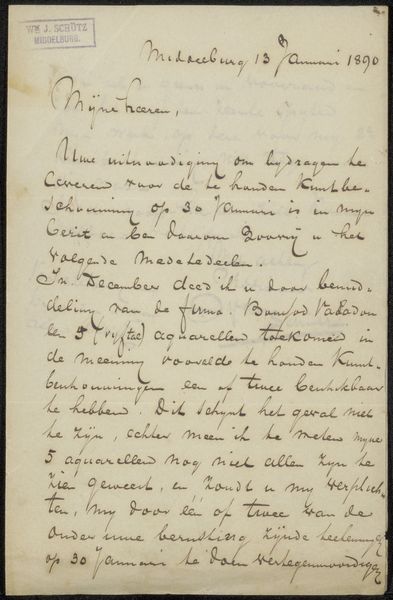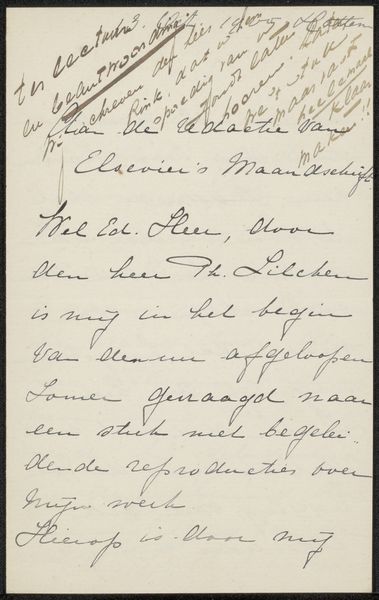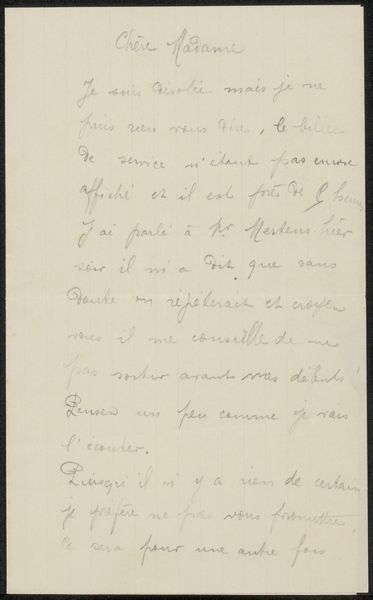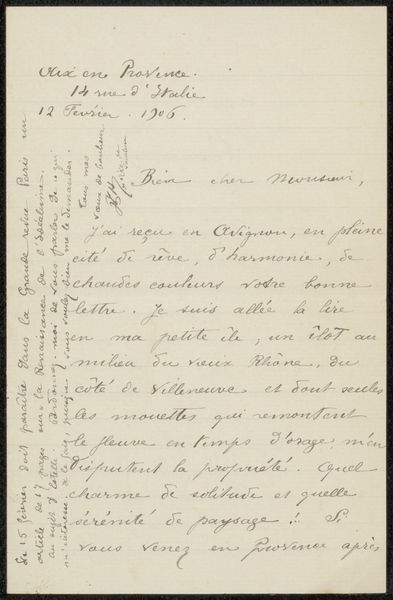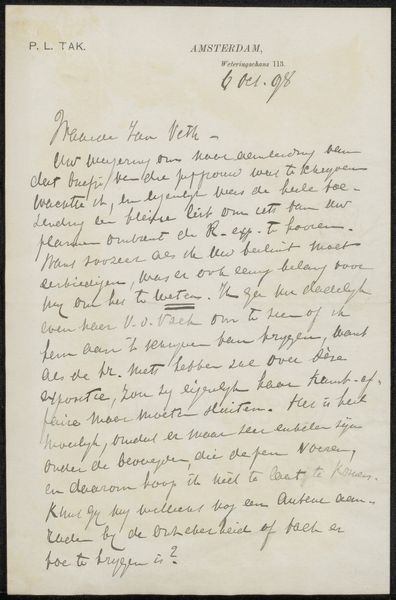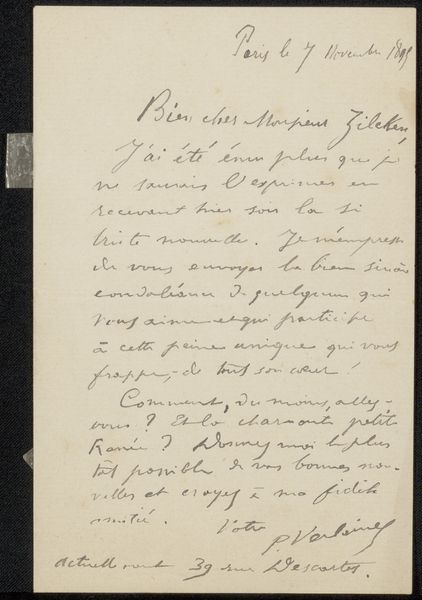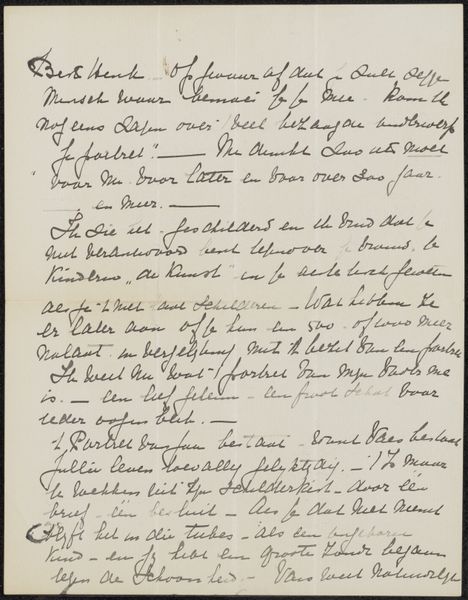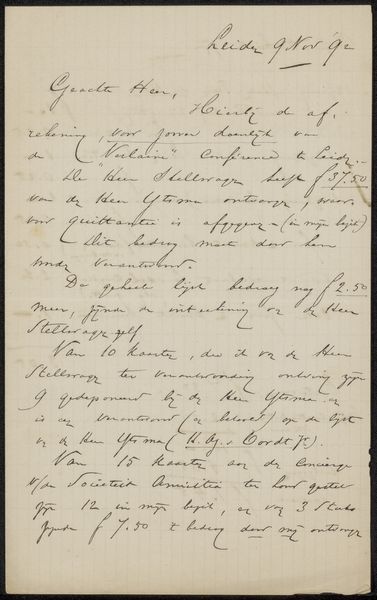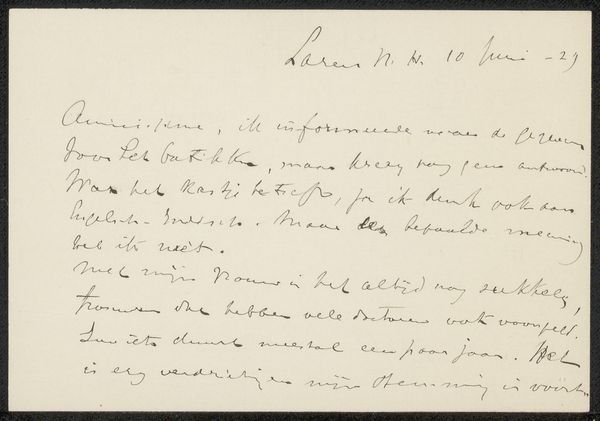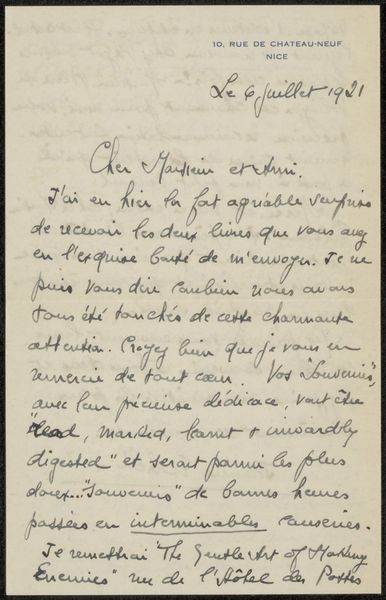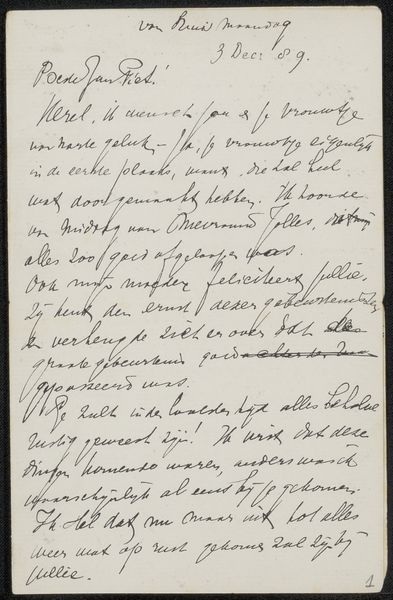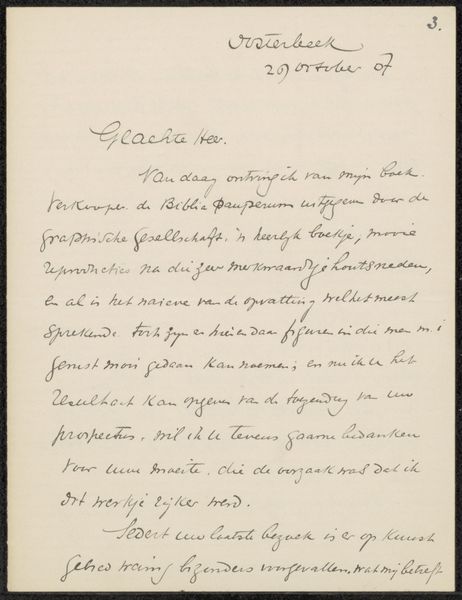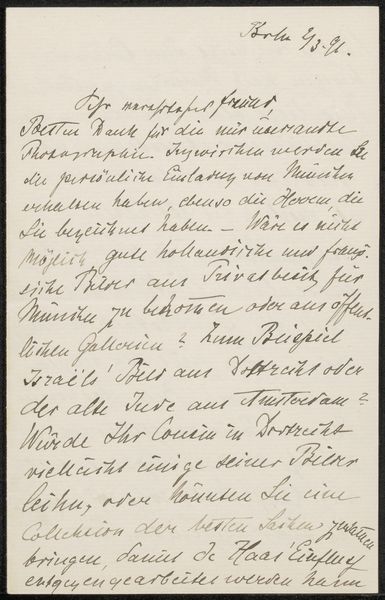
drawing, paper, ink
#
drawing
#
hand written
#
art-nouveau
#
script typography
#
hand-lettering
#
hand drawn type
#
hand lettering
#
paper
#
ink
#
hand-written
#
hand-drawn typeface
#
thick font
#
symbolism
#
handwritten font
#
small lettering
Copyright: Rijks Museum: Open Domain
Editor: Here we have a drawing titled "Brief aan Philip Zilcken" by Maurice Maeterlinck, created before 1895, in ink on paper. What strikes me immediately is the handwritten script – it feels so personal and intimate, yet slightly difficult to decipher. What do you see in this piece? Curator: This letter offers a glimpse into the art world's social networks and the circulation of ideas in the late 19th century. Maeterlinck, a prominent symbolist writer, corresponds with Zilcken, likely a fellow artist or critic. The very act of handwriting, before mass communication, emphasizes a personal connection and highlights the cultural value placed on direct correspondence and thoughtful expression. Do you notice any Art Nouveau elements in the handwriting? Editor: Yes, the stylized lettering and the fluid lines definitely suggest an Art Nouveau influence. But what's the significance of the letter being displayed as an artwork? Curator: By showcasing this personal correspondence, the institution elevates it beyond a simple message. It becomes a historical artifact, revealing insights into the artistic and intellectual circles of the time, as well as the artistic merit embedded in hand lettering as a mode of visual expression. We can even read it as a rebellion against the growing mechanization of the era. The act of crafting this letter—the deliberate choice of words, the penmanship itself—becomes a statement. How do you think displaying this kind of piece shapes the public's understanding of art and its role in society? Editor: I guess it broadens the definition, and emphasizes the importance of understanding art's social context. I initially just saw the writing, but now it tells a broader story. Curator: Precisely. And remember, even something as seemingly simple as a letter can challenge the conventional idea of what deserves to be in a museum. Editor: It's fascinating how one piece can hold so much history and context. I'll definitely be thinking about the politics of display differently from now on!
Comments
No comments
Be the first to comment and join the conversation on the ultimate creative platform.
